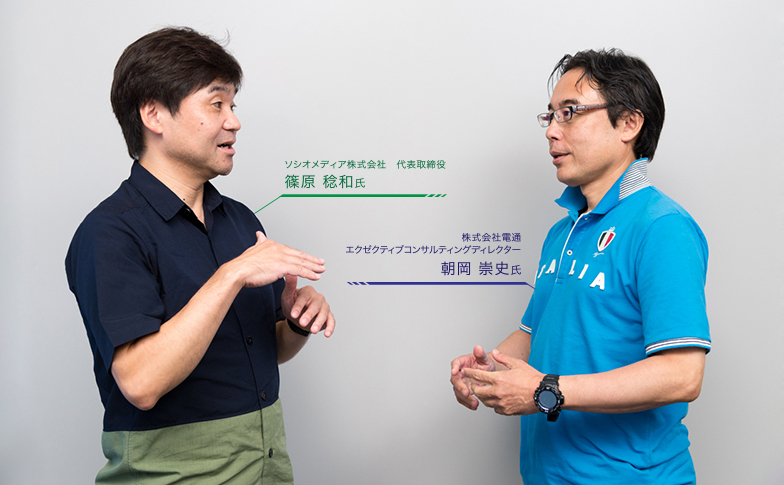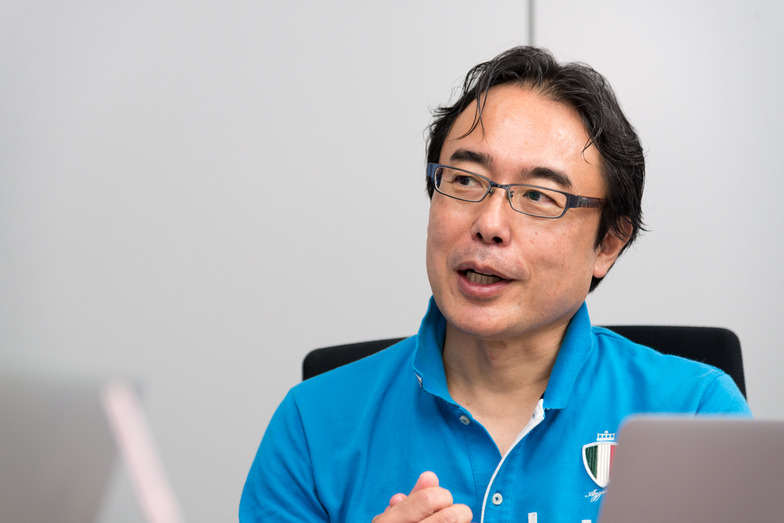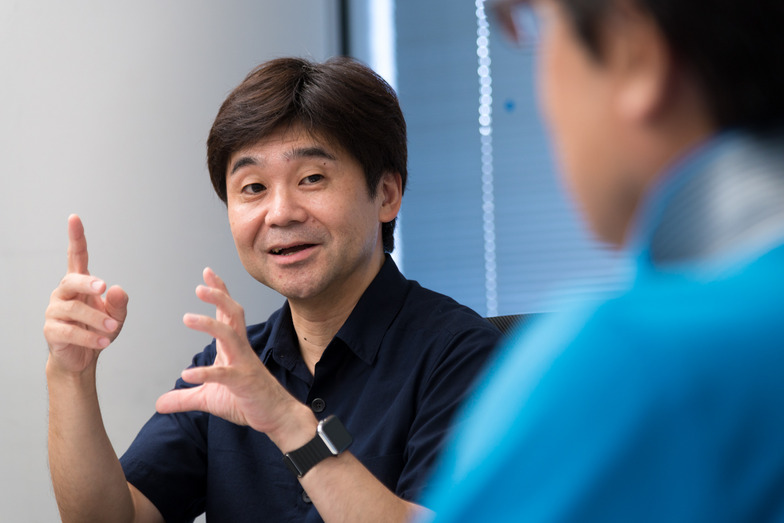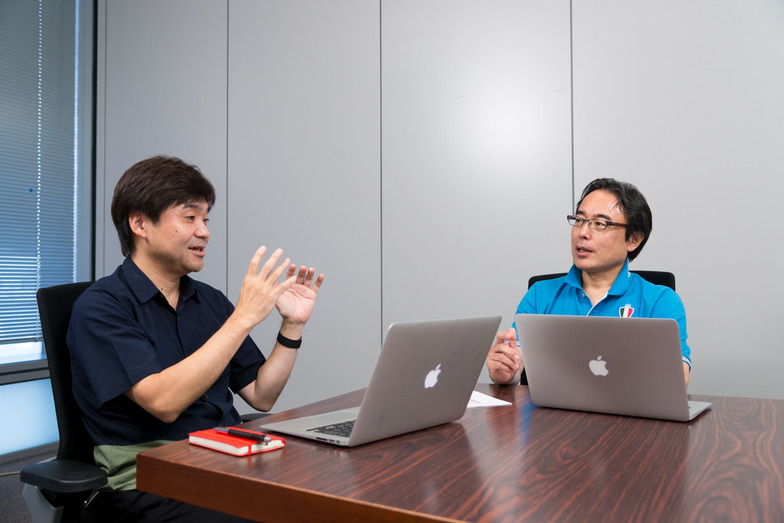Continuing from last time, we welcome Mr. Toshikazu Shinohara, CEO of SocioMedia and a world-renowned expert in the field of User Experience (UX). We'll present our discussion in an interview format, learning from his insights.
In the latter part, we delved deeply into the second topic, "Building Organizations Centered on UX," with Mr. Shinohara.
U.S. GE Creates New "Chief Experience Officer" Position
Asaoka: We're speaking with Mr. Shinohara of SocioMedia about two key points: "Measuring UX and Metrics (Evaluation Indicators)" and "Building Organizations with UX at the Core." Moving forward, we'll focus on the second point, organizational development. I understand you recently visited a leading company in this area.
Shinohara: Yes, I visited General Electric (GE) in the U.S. While attention is growing in Japan too for building organizations centered around UX, it still tends to be limited to design departments or parts of marketing, not yet becoming a company-wide movement.
In the U.S., centered around Silicon Valley as a testing ground, the movement to embed UX within companies is gaining serious momentum. What's most symbolic at GE is undoubtedly the appointment of a Chief Experience Officer (CXO). The CEO personally elevated a staff member who was originally a UX manager to the executive level.

GE Office
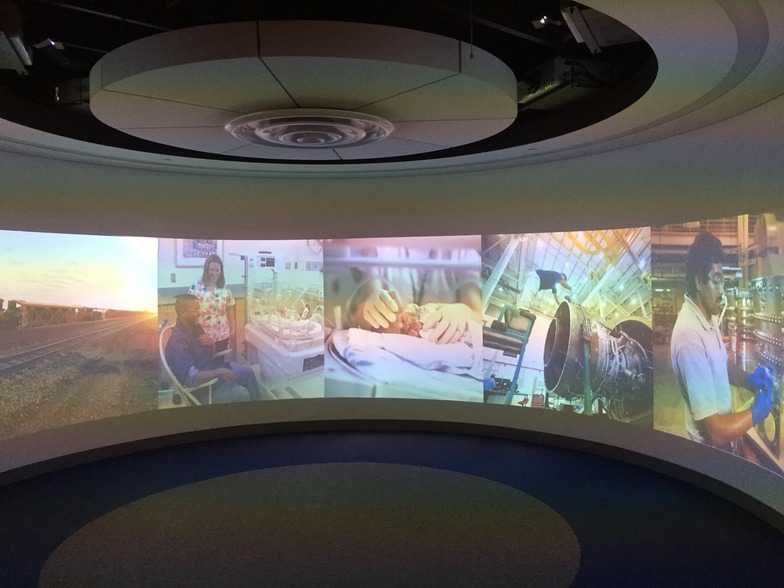
Multi-display room within the office
Asaoka: This is truly fascinating. Last May, I published the book Experience-Driven Marketing (First Press), and I don't believe the term "CXO" had emerged yet at that time. Even so, as a prediction at the book's conclusion, I wrote that right-brain technocrats would emerge to manage user experience from a business management perspective. GE struck me as the perfect example of precisely that.
Shinohara: That's right. It's also noteworthy that GE has established a cutting-edge organization focused on more experiential design, separate from its traditional product design department. People from various sections gather there, and workshops similar to those Asaoka-san conducts frequently at client companies are held. This encourages them to experience firsthand how crucial it is to create things starting from the perspective of users and customers. Then, those who experience it return to their respective roles and spread that mindset.
This winter (December 10-11), we're inviting their CXO, Greg Petrov (from GE Software's Design & Experience Center), to a seminar we're hosting. I really wanted to see this firsthand and talk with him. Specifically, I wanted to learn best practices: how they achieved such a UX-focused organizational structure. The session offered many insights applicable to Japanese organizations, such as integrating UX programs into GE's manager training and the presence of servant-leader types who support the organization itself.
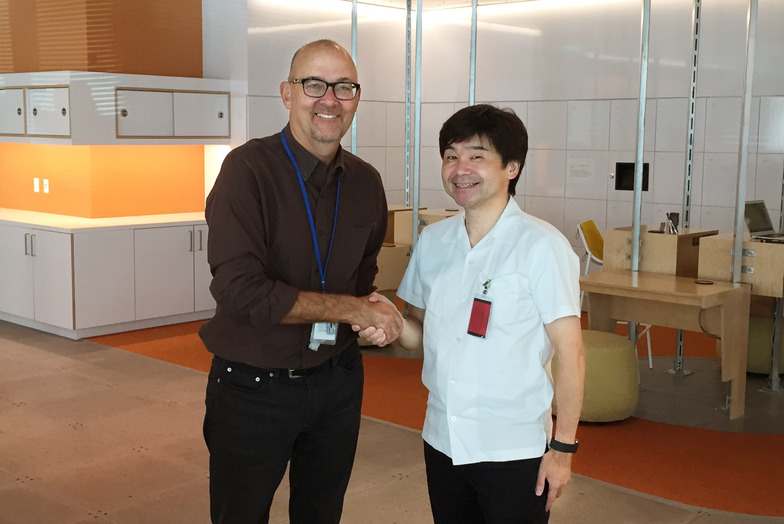
GE CXO Greg Petrov and Shinohara
Changing the mindset of middle management and transforming the organization
Asaoka: GE is a traditional global corporation founded by Thomas Edison, yet it is fundamentally transforming its corporate culture toward a startup-like mindset. To strengthen its IT and software businesses, it has established a software center in Silicon Valley employing thousands. I understand this also aims to introduce a venture-like spirit within the company.
However, while it's instructive, I think there are challenges in directly applying these measures to Japan. What are your thoughts, Mr. Shinohara?
Shinohara: Indeed, when I share GE's case with executives at various large corporations, the overwhelming reaction is, "It's impossible to suddenly bring in people from outside and try to 'replace the blood' like that." So, how can we adapt this approach for Japan? The most "external" people within a company are the new hires. Select new employees for projects, have them master various aspects of UX, and then suddenly have them participate in workshops on themes close to management strategy. Well, I think this also presents many challenges we should tackle.
In any case, I'm very interested right now in what steps and variables exist in the process of bringing in new blood to fundamentally transform and mature an organization, and what unique approaches Japan can take.
Asaoka: What I found instructive in GE's corporate culture reform was how people who gathered at that center to experience UX firsthand then returned to their posts to spread those ideas. They invited Eric Ries, the entrepreneur who pioneered "Lean Startup" (covered in this series' first installment), as an instructor and thoroughly drilled that philosophy into about 30 selected middle managers. The idea was for them to return to their respective departments and act as evangelists, spreading the concept. While this might occur naturally in what Drucker called an "orchestral" organization, it's quite difficult in mature large corporations. In that sense, I believe GE's process offers valuable lessons for many Japanese companies.
Shinohara: The idea that the middle management layer itself embraces a startup mindset and drives organizational change from within is also a very Japan-appropriate approach.
Beyond differences between Japan and the US, even considering the contrast between startups and large corporations, I believe Lean Startup principles are highly transferable to large enterprises. There's a symbolic example here: Marissa Mayer, who served as Vice President of User Experience at Google, was recognized for transforming the company into a UX-driven organization and was subsequently appointed CEO of Yahoo. She not only embedded UX thinking within the team but also, from a management perspective, actively involved people from various positions. Since then, UX-focused thinking has become prominent not just in startups but also in large corporations.
In Japan, promoting such talented individuals remains challenging. Therefore, I believe a UX-centric mindset may take root in companies through a bottom-up approach driven by the active participation of mid-level staff, potentially triggered by some organizational crisis, combined with timely awareness from top leadership.
Exploring KPIs for Maturity from the Organizational "UX Maturity Model"
Asaoka: In Japan too, among the companies we work with, several have established cross-functional internal organizations directly under management to drive UX. These companies are positioning user experience improvement as one of their top business priorities as a new initiative, taking steps to overhaul their marketing processes, and committing to doing this responsibly as an organization.
Regarding your area of interest, Shinohara-san, I imagine the question of how such organizations mature in this direction comes up. What kind of research and analysis is progressing on this point?
Shinohara: Based on the UX measurement discussed earlier, we're conducting "UX Organizational Maturity Research" as part of the effort to translate various UX data into KPIs. We map where each company stands in terms of maturity from a UX perspective, based on interviews. Then, we explore why that company reached that level of maturity and try to derive the relevant KPIs. In other words, we're still in the stage of searching for those KPIs.
Asaoka: What specific stages are there?
Shinohara: The UX maturity model envisions six stages. The lowest is "Unrecognized," where UX isn't even recognized as important. The highest is "Embedded," where it's already deeply ingrained. At this level, it's so commonplace within the organization that it's rarely discussed. Practically speaking, we consider the fifth stage, "Engaged," as the state where maturity is consciously high. Companies like Apple are already at the Embedded stage.
Asaoka: Where would most Japanese companies typically fall on this scale?
Shinohara: Unfortunately, many are at the first level. They don't recognize it. This might be a delicate way of putting it, but in Japan, the concept of "omotenashi" (hospitality) is highly valued, and thinking from the customer's perspective is considered a given. However, in reality, the organizational culture often doesn't match this.
When companies insist this isn't true and we ask for specific examples of messages or behaviors within their company, the answers are vague. At the actual stage of creating products or services, the logic tends to be overwhelmingly provider-centric. When we ask about the customer, they say, "We always consider them," but it's like a rubber ball – a user that deforms and changes shape conveniently for the provider.
Asaoka: So while they say they "value" customers, they actually don't see the real customers.
Shinohara: Exactly. Analyzing Japanese companies, we find they're stuck at the first stage—or rather, they believe they're "seeing the customer"—and figuring out how to mature beyond that is incredibly difficult. However, I believe analyzing this effectively could lead to valuable recommendations.
Changing organizational culture through ongoing internal workshops
Asaoka: I currently conduct a significant number of UX design workshops for client companies every month. Companies that, through bold management decisions, initiate cross-functional workshops aimed at overhauling the user experience would be considered relatively mature under your definition, Shinohara-san.
Shinohara: I agree. They recognize the urgency of their situation and are actively seeking change.
Asaoka: I sense a strong determination in these companies that they must reexamine and transform their marketing processes from a customer-centric perspective to survive as a business. Beyond that—or perhaps more fundamentally—I believe they aim to embed UX-minded talent development and customer-centric transformation into their organizational culture. It feels like they have very high expectations for effects quite close to internal branding.
Shinohara: I see. What struck me from your explanation is that one-off workshops held externally, rather than inviting facilitators in-house for long-term engagement, tend not to stick. Whether inside or outside the company, the corporate perspective and the consumer perspective switch. Even if you feel like you understood something at an external seminar, once you return to the company, you slip back into the corporate viewpoint. In that sense, conducting regular in-house work to develop UX thinking is a crucial approach for changing organizational culture. I definitely get the impression that this kind of approach is becoming more common.
Asaoka: While our theme this time was "UX Management," I believe every company shares a certain apprehension—even if they lack concrete understanding of UX—that they should reexamine their marketing processes from a customer-centric perspective. Needless to say, as markets mature and homogenize, many companies face the challenge that simply promoting functional or image-based value unilaterally is insufficient for brand differentiation.
Shinohara: I completely agree. Beyond the inability to differentiate through features, global companies excelling at the user perspective are creating significant gaps. Furthermore, with keywords like IoT emerging, the potential and necessity for cross-industry product development is growing.
When you cross industries, you reach a point where services can no longer be developed solely from that industry's perspective. The next generation of services can only be created starting from the user experiencing it. In that sense too, we need to return to the place where the experience is happening and embed a constant process within the organization to enrich that experience.
Asaoka: Discussing this again has reaffirmed the importance of UX management and the significant room for further challenges in this area. Moving forward, as innovators, we aim to engage with corporate leadership, collaborate with Mr. Shinohara on various initiatives, and assist in revitalizing marketing processes from a customer-centric perspective. Finally, could you share what SocioMedia has planned for the near future?
Shinohara: Alongside our UX design consulting, we are also focusing on events to position UX as a corporate strategy. On October 7th and 8th, we will host Jeff Saur, a global leader in quantifying UX, who will also discuss how to frame it as corporate ROI. We are very much looking forward to it, especially since Mr. Asaoka will also be speaking. Furthermore, on Friday, May 27, 2016, we plan to hold an event ("SocioMedia UX Strategy Forum Spring" https://www.sociomedia.co.jp/6879 ) featuring Greg Petrov, CXO of GE (USA), as the keynote speaker, alongside UX leaders from around the world and UX leaders from domestic corporate organizations. We sincerely hope you will find it valuable.
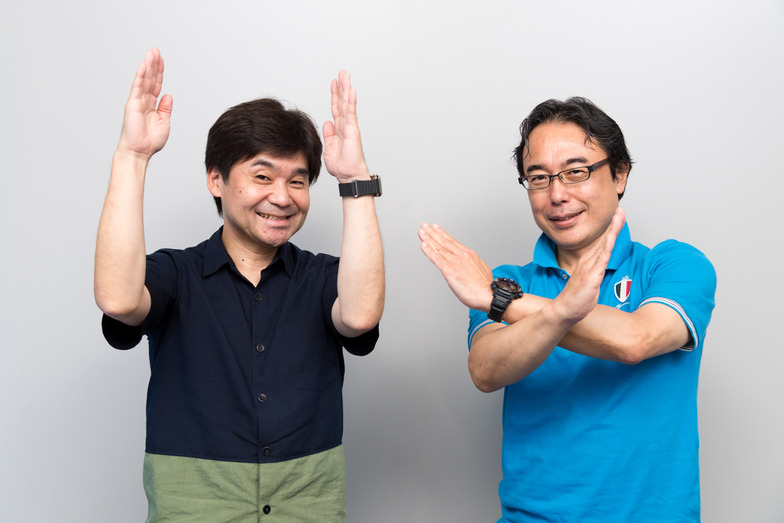
To conclude our discussion, Shinohara and Asaoka form the word "UX"!




